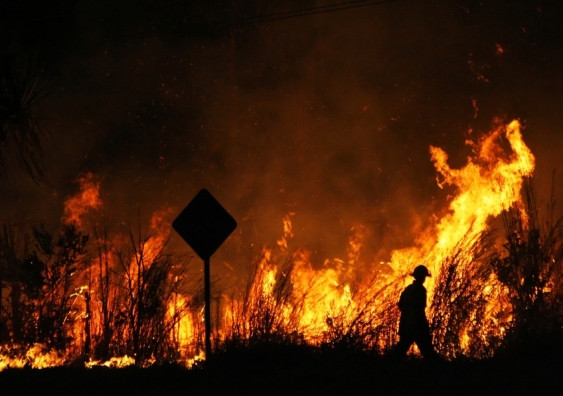Navigating Bush Fire Defense Rules With BAL Report
In the world of residential property development and homeownership, browsing bush fire defense guidelines is extremely important for ensuring the safety and compliance of structures in high-risk areas. Central to this endeavor is the Bushfire Attack Level (BAL) report, a vital paper that analyzes the possible direct exposure of a residential or commercial property to bushfire. Comprehending exactly how to apply the details and analyze had within a BAL report can considerably influence the design, building, and maintenance of buildings. By delving into the intricacies of BAL analyses and their implications for constructing conformity, stakeholders can proactively take care of bush fire risks and protect properties against potential risks.
Comprehending Bush Fire Protection Rules
To successfully navigate the intricacies of bush fire defense guidelines, it is important to have a clear understanding of the regulating guidelines and requirements in position. Bush fire protection laws are essential for guarding homes and lives in areas vulnerable to bushfires. These guidelines develop the requirements and procedures that homeowner must adhere to in order to minimize the dangers connected with bushfires.

Importance of BAL Analyses
Recognizing the importance of BAL assessments is pivotal in making certain conformity with bush fire protection guidelines and effectively alleviating the threats connected with bushfires. BAL assessments, which identify the Bushfire Strike Level of a building, are important for making suitable bush fire defense measures customized to the certain danger account of the site. By evaluating variables such as greenery kind, range to prospective fire hazards, and incline of the land, BAL assessments give beneficial insights right into the level of risk a residential property encounters during a bushfire event.

Effects for Building Compliance
Navigating via building compliance demands in conformity with BAL evaluations is vital for making sure frameworks are properly strengthened versus the threats postured by bushfires. Structure conformity refers to adhering to the policies and criteria stated to boost the security and durability of buildings in bushfire-prone areas. The implications of building compliance in regard to BAL assessments are considerable. Structures that stop working to fulfill the required conformity criteria go to a greater threat of sustaining damages or destruction throughout a bushfire occasion. This not only jeopardizes the passengers however also postures a danger to the surrounding environment.
Guaranteeing structure conformity involves careful planning, building, and upkeep to reduce the possible impact of bushfires. It needs an extensive understanding of the BAL rating designated to the property and carrying out the proper actions to boost its fire protection abilities.
Managing Shrub Fire Risks Properly
Given the essential significance of structure conformity in strengthening structures against bushfire risks, properly handling these dangers requires a detailed method that focuses on proactive reduction approaches. To begin, performing complete threat evaluations is paramount. Recognizing the certain vulnerabilities of a home in regard to bushfires enables tailored risk mitigation strategies. This involves studying elements such as the home's area, surrounding plant life, topography, and prevailing climate condition. Implementing ideal plants administration strategies is an additional crucial facet of effective risk monitoring. Clearing up combustible greenery, developing defensible areas, and ensuring proper maintenance can dramatically reduce the threat of fire spreading out to the residential or commercial property. Spending in fire-resistant structure materials and building strategies can boost the structure's capacity to endure coal attacks and direct fire contact. Furthermore, practicing an emergency and creating action strategy is essential for making sure that citizens know how to react quickly and safely in case of a bushfire. By integrating these positive actions, homeowner can properly take care of bushfire threats and increase here are the findings the security of their occupants and structures.
Practical Tips for Homeowners and Developers
Properly handling bushfire threats as a home owner or designer necessitates carrying out practical reduction techniques tailored to the building's certain vulnerabilities and surroundings. One critical suggestion is to keep a well-kept defensible room around structures, commonly a minimum of 30 meters in high-risk areas. This room ought to be free from combustible greenery, particles, and other flammable materials that can potentially sustain a fire. In addition, selecting fire-resistant structure materials can significantly boost the building's capability to endure coal assaults and direct flame call. Making certain that walls, roofing systems, and home windows are built or updated to meet pertinent bushfire protection requirements is essential.
Furthermore, developing an emergency strategy and exercising evacuation drills with family members members, staff members, or occupants can save lives in the event of a bushfire. Remaining informed about neighborhood fire risk ratings, weather, and emergency situation informs is likewise vital for making timely choices check my source to shield life and residential or commercial property. Last but not least, involving with local fire authorities, area groups, and experts experienced in bushfire administration can provide useful guidance and assistance in creating extensive bushfire defense strategies.
Conclusion
Finally, browsing bush fire protection laws with a BAL record is important for guaranteeing structure compliance and managing bush fire threats successfully. Recognizing the importance of BAL analyses and following sensible ideas can aid developers and home owners minimize the influence of bush fires. By adhering to these laws and taking necessary safety measures, people can create more secure environments on their own and their communities.
Key parts of bush fire security regulations consist of the Bushfire Assault Level (BAL) analysis, which determines the level of risk a building encounters from bushfires. BAL assessments, which determine the Bushfire Attack Degree of a property, are critical for creating ideal bush fire protection steps customized to the certain risk profile of the website. By reviewing aspects such as plant life type, distance to potential fire dangers, and incline of the land, BAL analyses supply important insights right into the level of risk a residential or commercial property his comment is here faces throughout a bushfire event.

In final thought, browsing bush fire defense laws with a BAL record is crucial for ensuring building compliance and managing bush fire risks effectively.